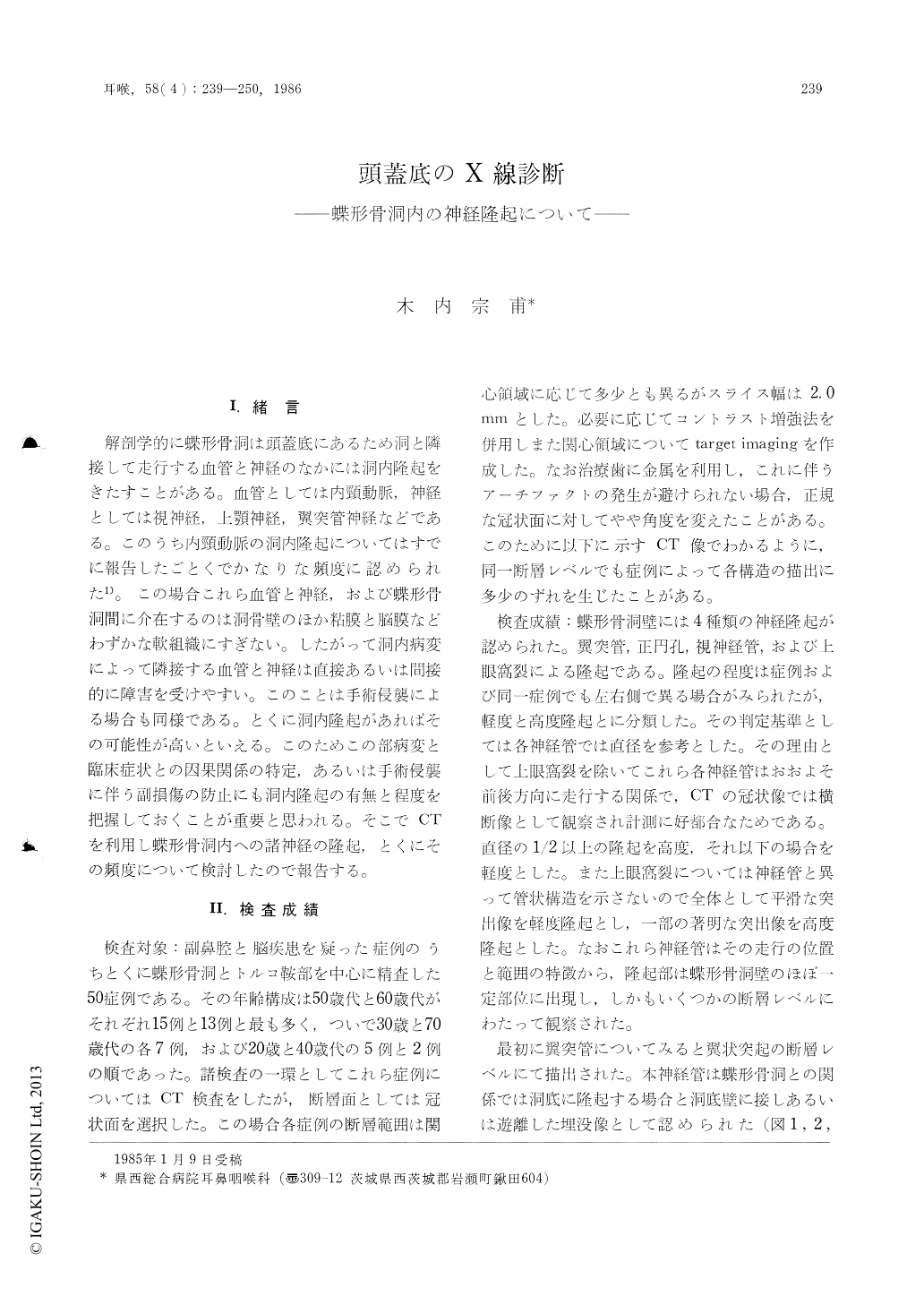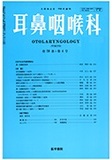Japanese
English
- 有料閲覧
- Abstract 文献概要
- 1ページ目 Look Inside
I.緒言
解剖学的に蝶形骨洞は頭蓋底にあるため洞と隣接して走行する血管と神経のなかには洞内隆起をきたすことがある。血管としては内頸動脈,神経としては視神経,上顎神経,翼突管神経などである。このうち内頸動脈の洞内隆起についてはすでに報告したごとくでかなりな頻度に認められた1)。この場合これら血管と神経,および蝶形骨洞間に介在するのは洞骨壁のほか粘膜と脳膜などわずかな軟組織にすぎない。したがって洞内病変によって隣接する血管と神経は直接あるいは間接的に障害を受けやすい。このことは手術侵襲による場合も同様である。とくに洞内隆起があればその可能性が高いといえる。このためこの部病変と臨床症状との因果関係の特定,あるいは手術侵襲に伴う副損傷の防止にも洞内隆起の有無と程度を把握しておくことが重要と思われる。そこでCTを利用し蝶形骨洞内への諸神経の隆起,とくにその頻度について検討したので報告する。
To estimate the incidence of the nervous prominence in the sphenoid sinus, computed tomographic study was carried out on 50 patients with suspicious lesions arised from the intracranial cavity and paranasal sinus. In the present series, the pterygoid canal was protruded into the sphenoid sinus, causing a pronounced elevation in 20% and slight one in 14%. The foramen rotundum was also observed as an elevation in 42%, and the condition was pronounced in 40%. In most of these cases the pterygoid elevation was also present. The optic canal showed a pronounced elevation in 18%. Moreover, projection produced by the superior orbital fissure was observed in 33%, and the elevation was pronounced in 20%.
These results suggested that CT can be the definite imaging method in diagnosis of the nervous prominence in the sphenoid sinus, and can provide the valuable informations for evaluation of the sphenoid sinus pathology.

Copyright © 1986, Igaku-Shoin Ltd. All rights reserved.


